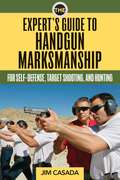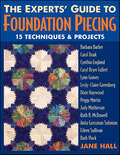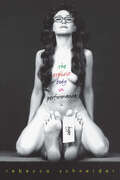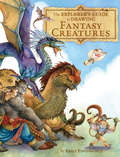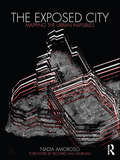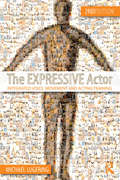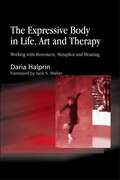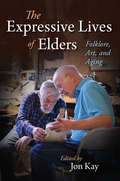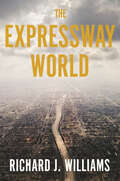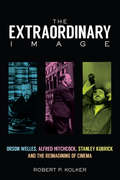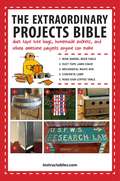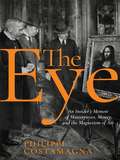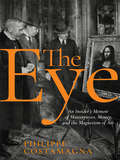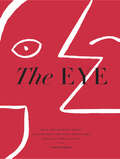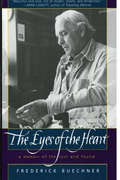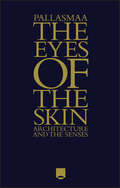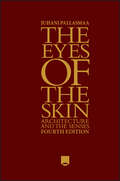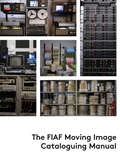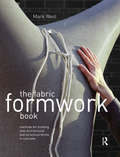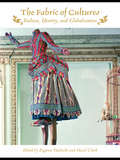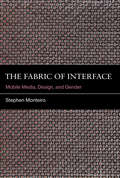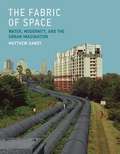- Table View
- List View
The Expert's Guide to Handgun Marksmanship: For Self-Defense, Target Shooting, and Hunting
by Jim CasadaFor self-defense with a handgun, target shooting, or hunting, this new book is a must read! The expertise of the world’s leading handgun experts-Charles Askins, Jr., Jeff Cooper, Julian S. Hatcher, Jack O’Connor, William Reichenbach, plus excerpts from US Army Field Manuals-is brought together for the first time in this convenient pocket-sized edition-everything you need to know to improve upon your handgun marksmanship skills.This informative, 160-page, fact-filled book is guaranteed to improve your handgun accuracy.Skyhorse Publishing is proud to publish a broad range of books for hunters and firearms enthusiasts. We publish books about shotguns, rifles, handguns, target shooting, gun collecting, self-defense, archery, ammunition, knives, gunsmithing, gun repair, and wilderness survival. We publish books on deer hunting, big game hunting, small game hunting, wing shooting, turkey hunting, deer stands, duck blinds, bowhunting, wing shooting, hunting dogs, and more. While not every title we publish becomes a New York Times bestseller or a national bestseller, we are committed to publishing books on subjects that are sometimes overlooked by other publishers and to authors whose work might not otherwise find a home.
The Experts' Guide To Foundation Piecing: 15 Techniques & Projects
by Jane HallLearn Foundation Piecing from the Experts • A foundation is any material used to piece on or with—fabric, interfacing, paper, batting, or flannel • Contributing artists include Carol Doak, Judy Mathieson, Ruth B. McDowell, Caryl Bryer Fallert, Jane Hall, and Dixie Haywood • Think it's new? Think again - Jane shares the history of foundation piecing plus antique examples • Create a wide variety of styles: contemporary to classic, elementary to elegant • Piece classic blocks, mariners' compasses, gorgeous florals, optical teasers-learn to foundation-piece virtually anything • 15 projects include complete instructions in a variety of techniques Clever quilters have pieced on foundations for over a century, but in recent years quilt artists have developed innovative ways to update foundation piecing. Now, everything you need is presented in one book from the experts: an engaging history, clear instructions for each technique, and lots of projects to practice your new skills. *Important Note about PRINT ON DEMAND Editions: This title will be printed after purchase and will arrive separately from any in-stock items. Please allow approximately 2 weeks for USA delivery, with an additional 2 weeks for international shipments. Expedited shipping is not available on POD Editions. The printing quality in this copy will vary from the original offset printing edition and may look more saturated due to printing on demand by a high-quality printer on uncoated (non-glossy) paper. The information presented in this version is the same as the most recent printed edition. Any pattern pullouts have been separated and presented as single pages.
The Explicit Body in Performance
by Rebecca SchneiderThe Explicit Body in Performance interrogates the avant-garde precedents and theoretical terrain that combined to produce feminist performance art. Among the many artists discussed are: * Carolle Schneemann * Annie Sprinkle * Karen Finley * Robbie McCauley * Ana Mendieta * Ann Magnuson * Sandra Bernhard * Spiderwoman Rebecca Schneider tackles topics ranging across the 'post-porn modernist movement', New Right censorship, commodity fetishism, perspectival vision, and primitivism. Employing diverse critical theories from Benjamin to Lacan to postcolonial and queer theory, Schneider analyses artistic and pop cultural depictions of the explicit body in late commodity capitalism. The Explicit Body in Performance is complemented by extensive photographic illustrations and artistic productions of postmodern feminist practitioners. The book is a fascinating exploration of how these artists have wrestled with the representational structures of desire.
The Explorer's Guide to Drawing Fantasy Creatures
by Emily FiegenschuhIf you're looking for an escape from ordinary life, the adventure starts here. The Explorer's Guide to Drawing Fantasy Creatures brings to light a fantastic realm of creatures so elusive and remote, they can be found only in myths, nightmares, and the work of artists like you. With years of perilous creature-drawing adventures behind her, Emily Fiegenschuh leads you step by step through the entire process, from expressive gesture drawings to beautifully detailed artwork, right down to all the gruesome details--like how to draw the leathery wings of dragons, the Minotaur's impressive physique, and the brilliant plumage of the Hook-Legged Bodeo. 25 step-by-step demonstrations for creating a bevy of beasts that roam air, land and sea Important basics of drawing, proportion and perspective to help you bring believability to your creatures Instruction for adding living, breathing color to finished sketches Expert tips on finding inspiration, developing personalities, designing costumes, and more. Grab your sketchbook, and venture forth, if you dare. Bring to life the creatures within these pages, as well as those lurking in the shadows of your own imagination.
The Exposed City: Mapping the Urban Invisibles
by Nadia AmorosoThere is a vast amount of information about a city which is invisible to the human eye – crime levels, transportation patterns, cell phone use and air quality to name just a few. If a city was able to be defined by these characteristics, what form would it take? How could it be mapped? Nadia Amoroso tackles these questions by taking statistical urban data and exploring how they could be transformed into innovative new maps. The "unseen" elements of the city are examined in groundbreaking images throughout the book, which are complemented by interviews with Winy Maas and James Corner, comments by Richard Saul Wurman, and sections by the SENSEable City Lab group and Mark Aubin, co-founder of Google Earth.
The Expressive Actor: Integrated Voice, Movement and Acting Training
by Michael Lugering"The study of acting should not begin with an exploration of feeling, perception, imagination, memories, intention, personalization, self-identification... or even performance—but physical action." Michael Lugering's The Expressive Actor presents a foundational, preparatory training method, using movement to unlock the entire acting process. Its action-based perspective integrates voice, movement and basic acting training into a unified approach. A wealth of exercises and diagrams guide the reader through this internationally taught program, making it an ideal step-by-step course for both solo and classroom use. Through this course, voice and body training becomes more than a simple skill-building activity – it is the central prerequisite to any actor training. This new Routledge edition has been fully updated, to include: A revised prologue, further discussing the historical and philosophical grounding of The Lugering Method A new introduction, with particular focus on the integrative nature of the method and how the book should be used. New developments, clarifications, and 12 new exercises. 6 new illustrative diagrams.
The Expressive Body in Life, Art, and Therapy: Working with Movement, Metaphor and Meaning
by Daria HalprinDrawing on her extensive experience in expressive arts therapy, Daria Halprin presents a unique approach to healing through movement and art. She describes the body as the container of one's entire life experience and movement as a language that expresses and reveals our deepest struggles and creative potentials. Interweaving artistic and psychological processes, she offers a philosophy and methodology that invites the reader to consider the transformational capacity of the arts. In this essential resource for anyone interested in the integration of psychotherapy and the arts, Halprin also presents case studies and a selection of exercises that she has evolved over her career and practised at the Tamalpa Institute for over twenty-five years.
The Expressive Lives of Elders: Folklore, Art, and Aging (Material Vernaculars)
by Jon KayCan traditional arts improve an older adult’s quality of life? Are arts interventions more effective when they align with an elder’s cultural identity? In The Expressive Lives of Elders, Jon Kay and contributors from a diverse range of public institutions argue that such mediations work best when they are culturally, socially, and personally relevant to the participants. From quilting and canning to weaving and woodworking, this book explores the role of traditional arts and folklore in the lives of older adults in the United States, highlighting the critical importance of ethnographic studies of creative aging for both understanding the expressive lives of elders and for designing effective arts therapies and programs. Each case study in this volume demonstrates how folklore and traditional practices help elders maintain their health and wellness, providing a road map for initiatives to improve the lives and well-being of America’s aging population.
The Expressway World
by Richard J. WilliamsIn the demonology of the contemporary city, is there anything more toxic than the expressway? Dividing neighbourhoods, depressing land values, concentrating atmospheric pollutants, the mammoth infrastructure of the expressway is now increasingly crumbling into the ground. How did we build the expressway world in the first place? And what are we going to do now with it now? This eye-opening book explores these questions partly through the great expressway abolitions of recent years, such as Boston’s Central Artery (buried and covered by a park) and Seoul’s Cheonggyecheon (replaced with an artificial river). But the book also uncovers the hidden stories of expressways that have become weird attractions in their own right, from London’s Westway to São Paulo’s Minhocão, celebrated in art and literature. Above all, the book proposes, counterintuitively, that we find ways to live with the expressway world and to adapt it to a different future, inspired by the many examples where people have already reinvented this challenging legacy on their own terms. Engaging with case studies across the world and recent thinking in the environmental humanities and architectural theory, this is a thought-provoking invitation to reconsider the most maligned structures of the recent urban past.
The Exquisite Book of Paper Flower Transformations: Playing with Size, Shape, and Color to Create Spectacular Paper Arrangements
by Livia Cetti&“Equips crafters with the skills for creating individual flowers and larger arrangements while providing a delightful overview on the basics of botany.&” —Publishers Weekly In The Exquisite Book of Paper Flower Transformations, artist Livia Cetti ups the ante with a host of grander and more intricate flowers and projects—more blooms, more petals, stronger stems, and bigger, bolder arrangements! Cetti will teach you how to play with size, shape, color, and texture to create twenty-five vibrant single stems in a variety of natural shapes—globes, spikes, bells, saucers, rectangles, cones, and arcs—including hydrangeas, coral charm peonies, honeysuckles, and paperwhites. Then, you&’ll use these elemental shapes to build the 15 bright, abundant arrangements, including bold wreaths, bountiful bouquets, fantastical gilded wall art, and blooming garlands. Introducing new, never-before-seen techniques for dyeing paper and creating moldable leaves and petals, this gorgeous guide is perfect for crafters of all skill levels interested in making realistic and unique home decor, gifts, accessories, and entertaining essentials. &“Unlike fresh-cut flowers, paper blooms last forever. And if you make them like floral stylist, crafter and creative director Livia Cetti, they might even be mistaken for the real thing. One of the top paper-flower artists in the U.S.&” —House & Home
The Extraordinary Archive of Arthur J. Munby: Photographing Class and Gender in the Nineteenth Century (International Library Of Visual Culture Ser.)
by Sarah EdgeIn the mid-1860s Arthur J Munby began to collect the first mass-produced photographic images of working-class women in England, recording fascinating details about the women, the places he purchased the photographs and the raging debates on this new commercial practice of photography, in accompanying diaries. Many of these images – not to mention Munby’s fascinating diaries - have never been published before. This book examines this previously un-investigated archive, offering a fresh and arresting perspective on the interrelationships between photographic representations of working-class women, the creation of new identities of class and gender and the evolution of popular conceptions of photography itself.
The Extraordinary Image: Orson Welles, Alfred Hitchcock, Stanley Kubrick, and the Reimagining of Cinema
by Robert P. KolkerWelles. Hitchcock. Kubrick. These names appear on nearly every list of the all-time greatest filmmakers. But what makes these directors so great? Despite their very different themes and sensibilities, is there a common genius that unites them and elevates their work into the realm of the sublime? The Extraordinary Image takes readers on a fascinating journey through the lives and films of these three directors, identifying the qualities that made them cinematic visionaries. Reflecting on a lifetime of teaching and writing on these filmmakers, acclaimed film scholar Robert P. Kolker offers a deeply personal set of insights on three artists who have changed the way he understands movies. Spotlighting the many astonishing images and stories in films by Welles, Hitchcock, Kubrick, he also considers how they induce a state of amazement that transports and transforms the viewer. Kolker's accessible prose invites readers to share in his own continued fascination and delight at these directors' visual inventiveness, even as he lends his expertise to help us appreciate the key distinctions between the unique cinematic universes they each created. More than just a celebration of three cinematic geniuses, The Extraordinary Image is an exploration of how movies work, what they mean, and why they bring us so much pleasure.
The Extraordinary Projects Bible: Duct Tape Tote Bags, Homemade Rockets, and Other Awesome Projects Anyone Can Make
by Instructables. ComContinuing the Instructables series with Skyhorse Publishing, a mammoth collection of projects has been selected and curated for this special best-of volume of Instructables. The guides in this book cover the entire spectrum of possibilities that the popular website has to offer, showcasing how online communities can foster and nurture creativity.From outdoor agricultural projects to finding new uses for traditional household objects, the beauty of Instructables lies in their ingenuity and their ability to find new ways of looking at the same thing. Extraordinary Projects Bible has that in spades; the possibilities are limitless, thanks to not only the selection of projects available here, but also the new ideas you'll build on after reading this book. Full-color photographs illustrate each project in intricate detail, providing images of both the individual steps of the process and the end product.
The Eye of Conscience: Photographers and Social Change
by Milton Meltzer Bernard ColePhotographs by noted photographers, past and present, and how photography has captured history and changed our existence.<P><P> Jane Addams Children’s Book Award Honor Book
The Eye: An Insider's Memoir of Masterpieces, Money and the Magnetism of Art
by Philippe CostamagnaIt's a rare and secret profession, comprising a few dozen people around the world equipped with a mysterious mixture of knowledge and innate sensibility. Summoned to Swiss bank vaults, Fifth Avenue apartments, and Tokyo storerooms, they are entrusted by collectors, dealers, and museums to decide if a coveted picture is real or fake and to determine if it was painted by Leonardo da Vinci or Raphael. The Eye lifts the veil on the rarified world of connoisseurs devoted to the authentication and discovery of Old Master artworks. This is an art adventure story and a memoir all in one, written by a leading expert on the Renaissance whose métier is a high-stakes detective game involving massive amounts of money and frenetic activity in the service of the art market and scholarship alike. It's also an eloquent argument for the enduring value of visual creativity, told with passion, brilliance, and surprising candor. PHILIPPE COSTAMAGNA is a specialist in sixteenth-century Italian painting and director of the Musée des Beaux-Arts in Ajaccio, Corsica. He is the author of a book on the Florentine Renaissance painter Pontormo.
The Eye: An Insider's Memoir of Masterpieces, Money, and the Magnetism of Art
by Philippe Costamagna&“Lifting the veil on the shadowy world of art insiders, Costamagna delivers an entertaining reflection on the dealers, devotees, and decision makers.&” —Town & Country Magazine It&’s a rare and secret profession, comprising a few dozen people around the world equipped with a mysterious mixture of knowledge and innate sensibility. Summoned to Swiss bank vaults, Fifth Avenue apartments and Tokyo storerooms, they are entrusted by collectors, dealers and museums to decide if a coveted picture is real or fake and to determine if it was painted by Leonardo da Vinci or Raphael. The Eye brings to light the rarified world of connoisseurs devoted to the authentication and discovery of Old Master art works. This is an art adventure story and a memoir all in one, written by a leading expert on the Renaissance whose métier is a high-stakes detective game involving massive amounts of money and frenetic activity in the service of the art market and scholarship alike. It&’s also an eloquent argument for the enduring value of visual creativity, told with passion, brilliance and surprising candor. &“[A] rollicking and erudite tour of the art world . . . Costamagna&’s candor and well-earned hubris make for an entertaining foray into the high-stakes art world.&” —Publishers Weekly &“As thrilling as a police novel.&” —La Croix &“An insider&’s look at the dramatic world of attributing and dating art . . . This art world Sherlock Holmes travels the globe . . . Delightful.&” —Introspective Magazine &“One comes away feeling somewhat re-sensitized to beauty and somewhat nostalgic for an era when museums weren&’t the selfie-stick madhouses they are today.&” —The Washington Post
The Eye: How the World's Most Influential Creative Directors Develop Their Vision
by Nathan WilliamsThey’re often behind the scenes, letting their work take center stage. But now Nathan Williams, founder and creative director of Kinfolk magazine and author of The Kinfolk Table, The Kinfolk Home, and The Kinfolk Entrepreneur—with over 250,000 copies in print combined—brings more than 90 of the most iconic and influential creative directors into the spotlight. In The Eye, we meet fashion designers like Claire Waight Keller and Thom Browne. Editorial directors like Fabien Baron and Marie-Amélie Sauvé. Tastemakers like Grace Coddington and Linda Rodin. We learn about the books they read, the mentors who guided them, their individual techniques for achieving success. We learn how they developed their eye—and how they’ve used it to communicate visual ideas that have captured generations and will shape the future. As an entrepreneur whose own work is defined by its specific and instantly recognizable aesthetic, Nathan Williams has a unique vision of contemporary culture that will make this an invaluable book for art directors, designers, photographers, stylists, and any creative professionals seeking inspiration and advice.
The Eyes of the Heart: A Memoir of the Lost and Found
by Frederick BuechnerFrom critically acclaimed author and Pulitzer Prize runner-up Frederick Buechner comes another powerfully honest memoir, The Eyes of the Heart. Full of poinant insights into his most personal relationships, this moving account traces how the author was shaped as much by his family's secrets as by its celebrations.Within the innermost chambers of his consciousness, Buechner, in his characteristically self-searching style, explores the mysteries and truths behind his deepest connections to family, friends, and mentors. Extraordinarily moving, this memoir follows not chronology but the converging paths of Buechner's imagination and memory.Buechner invites us into his library-his own Magic Kingdom, Surrounded by his beloved books and treasures, we discover how they serve as the gateway to Buechner's mind and heart. He draws the reader into his recollections, moving seamlessly from reminiscence to contemplation. Buechner recounts events such as the tragic suicide of his father and its continual fallout on his life, intimate and little-known details about his deep friendship with the late poet James Merrill, and his ongoing struggle to understand the complexities of his relationship to his mother.This cast of characters comprised of Buechner's relatives and loved ones is brought to vibrant life by his peerless writing and capacity to probe the depths of his own consciousness. Buechner visits his past with an honest eye and a heart open to the most painful and life-altering of realizations. heartbreaking and enlightening, The Eyes of the Heart is a treasure for any who have ever pondered the meaning and mystery of their own past.As "one of our finest writers," according to author Annie Dillard, Frederick Buechner provides yet another chapter in the tale of his life in this gripping memoir tracing the complicated roots and path of his inner life and family, with their multitude of intersections." The Eyes of the Heart stands as a touching testimonial to the significance of kinship to the author as well as to the legions of readers who have come to regard him as one of their own.
The Eyes of the Skin
by Juhani PallasmaaFirst published in 1996, The Eyes of the Skin has become a classic of architectural theory. It asks the far-reaching question why, when there are five senses, has one single sense - sight - become so predominant in architectural culture and design? With the ascendancy of the digital and the all-pervasive use of the image electronically, it is a subject that has become all the more pressing and topical since the first edition's publication in the mid-1990s. Juhani Pallasmaa argues that the suppression of the other four sensory realms has led to the overall impoverishment of our built environment, often diminishing the emphasis on the spatial experience of a building and architecture's ability to inspire, engage and be wholly life enhancing.For every student studying Pallasmaa's classic text for the first time, The Eyes of the Skin is a revelation. It compellingly provides a totally fresh insight into architectural culture. This third edition meets readers' desire for a further understanding of the context of Pallasmaa's thinking by providing a new essay by architectural author and educator Peter MacKeith. This text combines both a biographical portrait of Pallasmaa and an outline of his architectural thinking, its origins and its relationship to the wider context of Nordic and European thought, past and present. The focus of the essay is on the fundamental humanity, insight and sensitivity of Pallasmaa's approach to architecture, bringing him closer to the reader. This is illustrated by Pallasmaa's sketches and photographs of his own work. The new edition also provides a foreword by the internationally renowned architect Steven Holl and a revised introduction by Pallasmaa himself.
The Eyes of the Skin: Architecture and the Senses
by Juhani PallasmaaTHE EYES OF THE SKIN Explore the relationship between architecture and the sensory experience with the fourth edition of this groundbreaking work First published in 1996, The Eyes of the Skin is a classic of architectural theory. It asks the far-reaching question why, when there are five senses, is one single sense—sight—so predominant in architectural culture and design? With the ascendancy of the digital and the all-pervasive use of the image electronically, the subject is all the more pressing and topical since the first edition’s publication. Juhani Pallasmaa argues that the suppression of the other four sensory realms has led to the overall impoverishment of our built environment, often diminishing the emphasis on the spatial experience of a building and architecture’s ability to inspire, engage and be wholly life enhancing. For a student reading this text for the first time, The Eyes of the Skin is a revelation. It provides a fresh, compelling insight into architectural culture which continues to inspire more than a quarter-century after its initial publication. The fourth edition of The Eyes of the Skin also features: The author’s latest views on the emphasis of place, unfocused perception and existential experience Updates and clarifications throughout, to reinforce how our sense of self in the world remains our most important sense with the greatest architectural impact An updated Foreword that touches on the current understanding of the seminal importance of the existential sense The Eyes of the Skin is a must-read for all architecture students, who will find its insights transformative.
The FIAF Moving Image Cataloguing Manual
by Linda TadicThe FIAF Moving Image Cataloguing Manual is the result of many years of labor and collaboration with numerous professionals in the moving image field. It addresses the changes in information technology that we’ve seen over the past two decades, and aligns with modern cataloguing and metadata standards and concepts such as FRBR (Functional Requirements for Bibliographic Records), EN 15907, and RDA (Resource Description and Access). The manual is designed to be compatible with a variety of data structures, and provides charts, decision trees, examples, and other tools to help experts and non-experts alike in performing real-world cataloguing of moving image collections.
The Fabric Formwork Book: Methods for Building New Architectural and Structural Forms in Concrete
by Mark WestConcrete is the most used man-made material in the world and is the fundamental physical medium for most of the world’s architecture and construction. The character of concrete is largely the product of the rigid moulds that have shaped it since its invention in antiquity. The advent of flexible moulds, however, marks a radical break from conventional practice – and conventional concrete architecture. The Fabric Formwork Book provides the first comprehensive handbook on the emerging technology of flexible moulds for reinforced concrete architecture. Written by the foremost expert in the field, this book takes a comprehensive and generous approach that includes technical, historical and theoretical aspects of the subject. The book: concentrates on simple flat-sheet formworks contains detailed technical descriptions of how to construct a wide range of formworks for various applications features case studies from around the world critiques the difficulties and advantages in each case it covers provides instruction and guidance on how to model and design fabric-formed structures includes the most comprehensive history of fabric formwork yet published features essays from guest expert authors, which explore the theoretical, historical, and poetic significance of flexibly formed architecture and structures discusses fabric formwork as an exemplary approach to sustainable construction through its simplicity and efficiency. Beautifully designed and illustrated with a superb range of images, diagrams and technical drawings, the book both informs and inspires. Speaking directly and plainly to professionals, students and academics, the language used is both clear and precise, and care is taken to avoid opaque technical or academic jargon. Technical terms, when used, are clearly described and a special glossary is included to make the book as widely accessible as possible.
The Fabric of Cultures: Fashion, Identity, and Globalization
by Eugenia Paulicelli Hazel ClarkFashion is both public and private, material and symbolic, always caught within the lived experience and providing an incredible tool to study culture and history. The Fabric of Cultures examines the impact of fashion as a manufacturing industry and as a culture industry that shapes the identities of nations and cities in a cross-cultural perspective, within a global framework. The collected essays investigate local and global economies, cultures and identities and the book offers for the first time, a wide spectrum of case studies which focus on a diversity of geographical spaces and places, from global capitals of fashion such as New York, to countries less known or identifiable for fashion such as contemporary Greece and soviet Russia. Highly illustrated and including essays from all over the world, The Fabric of Cultures provides a comprehensive survey of the latest interdisciplinary scholarship on fashion, identity and globalisation.
The Fabric of Interface: Mobile Media, Design, and Gender (The\mit Press Ser.)
by Stephen MonteiroTracing the genealogy of our physical interaction with mobile devices back to textile and needlecraft culture. For many of our interactions with digital media, we do not sit at a keyboard but hold a mobile device in our hands. We turn and tilt and stroke and tap, and through these physical interactions with an object we make things: images, links, sites, networks. In The Fabric of Interface, Stephen Monteiro argues that our everyday digital practice has taken on traits common to textile and needlecraft culture. Our smart phones and tablets use some of the same skills—manual dexterity, pattern making, and linking—required by the handloom, the needlepoint hoop, and the lap-sized quilting frame. Monteiro goes on to argue that the capacity of textile metaphors to describe computing (weaving code, threaded discussions, zipped files, software patches, switch fabrics) represents deeper connections between digital communication and what has been called “homecraft” or “women's work.” Connecting networked media to practices that seem alien to media technologies, Monteiro identifies handicraft and textile techniques in the production of software and hardware, and cites the punched cards that were read by a loom's rods as a primitive form of computer memory; examines textual and visual discourses that position the digital image as a malleable fabric across its production, access, and use; compares the digital labor of liking, linking, and tagging to such earlier forms of collective production as quilting bees and piecework; and describes how the convergence of intimacy and handiwork at the screen interface, combined with needlecraft aesthetics, genders networked culture and activities in unexpected ways.
The Fabric of Space
by Matthew GandyWater lies at the intersection of landscape and infrastructure, crossing between visible and invisible domains of urban space, in the tanks and buckets of the global South and the vast subterranean technological networks of the global North. In this book, Matthew Gandy considers the cultural and material significance of water through the experiences of six cities: Paris, Berlin, Lagos, Mumbai, Los Angeles, and London. Tracing the evolving relationships among modernity, nature, and the urban imagination, from different vantage points and through different periods, Gandy uses water as a lens through which to observe both the ambiguities and the limits of nature as conventionally understood. Gandy begins with the Parisian sewers of the nineteenth century, captured in the photographs of Nadar, and the reconstruction of subterranean Paris. He moves on to Weimar-era Berlin and its protection of public access to lakes for swimming, the culmination of efforts to reconnect the city with nature. He considers the threat of malaria in Lagos, where changing geopolitical circumstances led to large-scale swamp drainage in the 1940s. He shows how the dysfunctional water infrastructure of Mumbai offers a vivid expression of persistent social inequality in a postcolonial city. He explores the incongruous concrete landscapes of the Los Angeles River. Finally, Gandy uses the fictional scenario of a partially submerged London as the starting point for an investigation of the actual hydrological threats facing that city.
